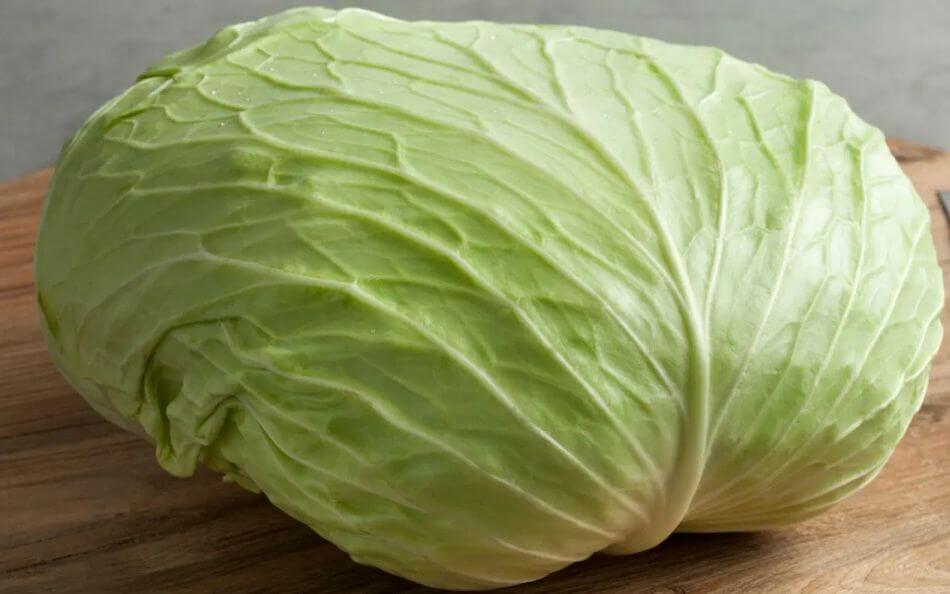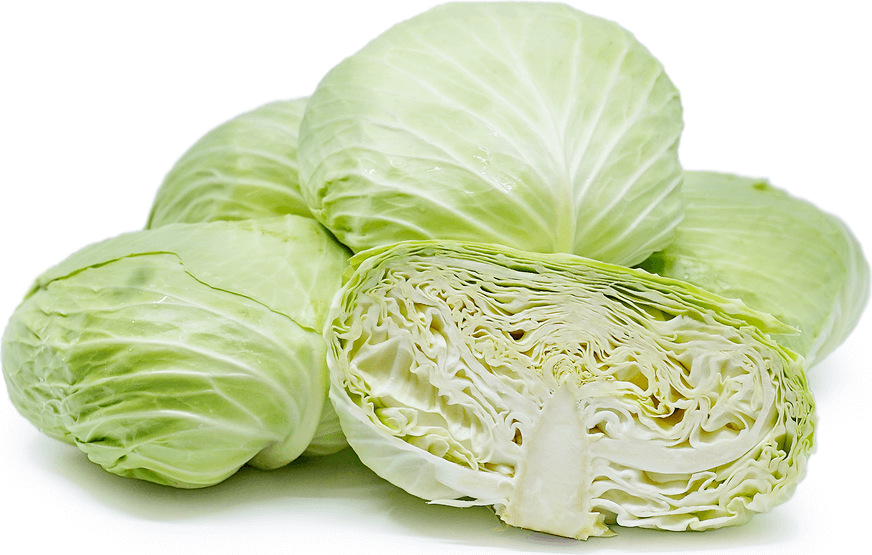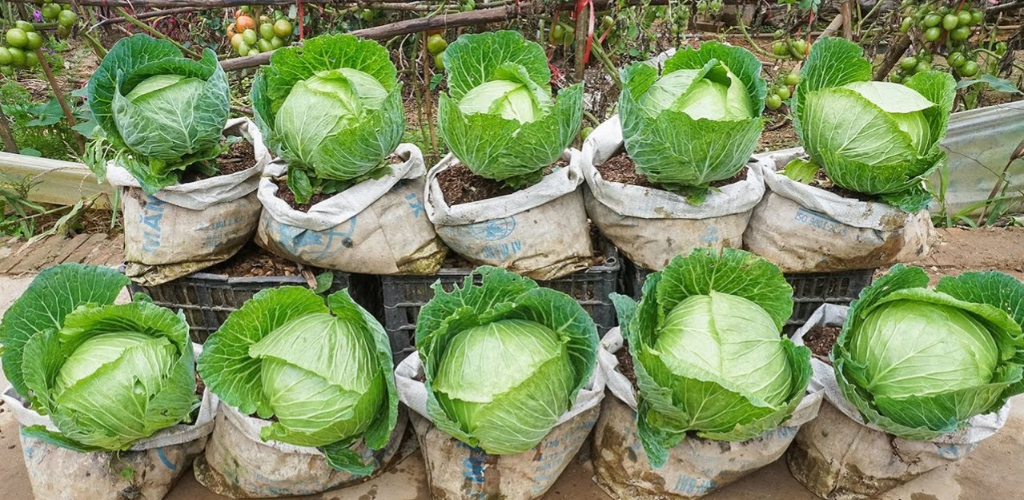How to Grow Taiwanese Flat Cabbage or Cabbage from Seeds.
Taiwanese flat cabbage or choudou is a newcomer to the Brassicaceae family, offering a slightly different flavor and tasty crunch.
You will not always find it in stores and it can be difficult to find it other than under the brand name sold in France called “Choudou”, however, it is a fairly easy vegetable to grow at home.
This article will give you all the tips and tricks you need to grow a flawless crop of Taiwanese cabbage and add a new dimension to your favorite dishes.
What is Taiwanese flat cabbage?
Taiwanese cabbage is a cabbage cultivar developed in Taiwan. This relatively new variety of Asian cabbage produces an unusually robust and flat head, measuring 20-30 cm in diameter and weighing about 1.5 kg. The leaves are green, sometimes purple, with a juicy, crunchy texture and unusual sweetness.
Unlike most types of Asian cabbage, which are varieties of the Brassica rapa plant, Taiwan cabbage is a variety of Brassica oleracea. This means it is closely related to classic round cabbage, cauliflower, broccoli and Savoy cabbage, rather than Chinese varieties such as bok choy and napa cabbage.
Note that there is a variety of Taiwanese cabbage that is usually sold under the same name. To ensure you get the right one, look for Taiwanese flat cabbage when purchasing your seeds.
How to grow Taiwanese cabbage:
Growing Taiwanese cabbage in your garden can be very easy and extremely rewarding. Let’s start with the basics of growing this vegetable.
When to plant Taiwanese cabbage:
Taiwanese cabbage can tolerate a wide range of climates, but will have difficulty growing in hot, dry conditions. If you live in an area where summers are very hot, it is best to grow it as a cool season crop. In fact, cooler temperatures will help this cabbage sprout well.
With the right growing conditions, the flat head of cabbage can weigh up to 2.5 kg.
As a general rule, avoid exposing Taiwanese cabbage to high temperatures during head development. For best results, start by germinating the seeds indoors, then transplant the seedlings into the garden two weeks after the last frost.
Taiwanese cabbage can also be grown as a winter vegetable if you live in an area with mild winters. In this case, you can sow the seeds outdoors at the end of summer and then simply let them grow in your garden until it is ready to be harvested. Like all cabbages, it has good frost tolerance and can be stored in its vegetable bed at temperatures as low as -7°C.

Germination of Taiwanese cabbage seeds:
Taiwanese cabbage seeds are very easy to germinate indoors. The seeds are small and do not need to be soaked in advance. Start by filling a compostable pot with a mixture of compost and garden soil, and place one seed in each pot. Keep the floor moist but not soaked and place them in a room where they get plenty of direct light.
On average, Taiwanese cabbage seeds take 7 to 10 days to germinate. Be sure to provide the seedlings with plenty of light and water, and keep them in a room where the temperature is between 21°C and 25°C. Once each plant has at least two sets of well-developed leaves, you can begin preparing to transplant it. outdoor.
Growing Taiwanese Cabbage Outdoors:
Taiwanese cabbage can be grown outdoors when the soil temperature is at least 10°C. Ideally, you should wait a few weeks after the last frost before sowing the seeds in the garden soil or transplanting the seedlings.
-Location:
Choose a part of your garden that is exposed to full sun. Although Taiwanese cabbage is a cool-season crop, it needs plenty of light for healthy growth. Be sure to plant it in a location where it will receive at least 6 hours of light a day.
-Land:
Taiwanese cabbage grows best in soil very rich in organic matter. Dig and turn the soil to a depth of 15 cm and incorporate plenty of compost and manure. The ideal pH range should be between 6.5 and 7.5. If the soil is too acidic, you can add lime to increase its pH.
– Transplant and spacing:
Taiwanese cabbage needs a lot of space to have a well-developed head. Plant seeds or seedlings about 30 cm apart. If you are transplanting seedlings, you can simply dig a small hole that matches the size of the compostable propagation tray. This way, you don’t have to worry about disturbing the plant’s small roots.
-Irrigation:
Give your Taiwanese cabbage plenty of water during the growing season. This vegetable does not tolerate drought, and any dry period associated with poor watering will split the head of cabbage. Not only that, but too little water during hot periods will also cause it to bolt.
One of the most common problems for Taiwanese cabbage is cracking, which is a direct result of improper watering. Cabbage heads may crack if there are fluctuations in your watering schedule or if the plant suddenly receives a lot of water after long periods of drought. To avoid this, make sure your cabbage is watered abundantly and regularly.
Depending on the climate, you may need to water your Taiwanese cabbage 2-3 times a week. Water cabbage early in the morning and add mulch to the base of the plant to help maintain moisture in the soil.
-Pass:
Taiwanese cabbage generally does not need fertilizer applications. If the soil has been prepared beforehand with a lot of compost or manure, you can avoid giving it additional nutrients.
However, if your garden has poor soils, you can apply a nitrogen-rich organic fertilizer once a month. Avoid using fertilizer late in the season, as this can split the cabbage head.
-Maintenance:
While your Taiwanese cabbage is growing, be sure to provide plenty of water and nitrogen-rich fertilizers. Keep the plant bed tidy and free of weeds, as this plant will not tolerate any competition for nutrients.
If you want to have an organic garden, we recommend pulling weeds by hand instead of using harmful chemicals and herbicides.

When to harvest Taiwanese cabbage:
Taiwanese cabbage generally takes 60 to 75 days after germination to reach maturity. It is ready to be harvested when the head of cabbage is about 20 cm in diameter, when it is firm to the touch and has an interior made of densely wrapped leaves.
How to harvest Taiwanese cabbage:
To harvest your Taiwanese cabbage, use a fork to remove the plant. Always make sure the entire root is removed from the soil to avoid harboring diseases such as club root. Use a knife to remove the roots from the base of the plant, then tape off the loose leaves from the outer layer to expose the dense, compact head.
Unlike other cabbage varieties, avoid leaving your Taiwanese cabbage in the ground for too long. If allowed to overripe, the head of cabbage can split in the middle and invite pathogens that can cause rot.
Also, it’s worth noting that cabbages planted later in the year will keep longer, while those planted in the spring are best enjoyed as soon as possible.
Storing Taiwanese Cabbage:
You can store Taiwanese cabbage in the crisper drawer of your refrigerator for up to two weeks. Simply remove the outer sheets and cover with plastic wrap. Avoid washing cabbage before storing it, as water trapped between the leaves will soften them and develop mold.
Cooking with Taiwanese cabbage:
Taiwanese cabbage can be eaten fresh or cooked. You can use it in the same way as classic head cabbage, in coleslaw, salads, sautéed, boiled or stir-fried. Or, for a touch of authenticity, you can use it to make Taiwanese kimchi, which is less spicy than the Korean version.
Common pests and problems:
– Cabbage hernia:
The most common problem for Taiwanese cabbage is meadow herniation. This disease is caused by a fungal infection that affects all plants in the Brassicaceae family. Common symptoms include yellowing, wilting, stunted growth, and root galls that look like small sticks or spindles.
Unfortunately, getting rid of cruciferous hernia is very difficult. This pathogen can survive in the soil for up to 20 years and spread easily from one field to another. As a result, prevention is the best remedy.
The easiest way to control club root is to rotate your crops and wait at least four years before growing plants from the cabbage family on the same plot of land. Maintaining soil pH above 7.0 with agricultural lime will also reduce the risk of hernia infestations.
If you find plants that have clubroot, remove them from the soil and burn them instead of adding them to your compost pile.
– Cabbage root fly:
Cabbageworm larvae can cause serious damage to your Taiwanese cabbage crop. They start from eggs laid near the base of the plant, then slowly rise up through the stem. Once inside, they can be difficult to remove and will eat away at the plant from the inside out.
There are no effective insecticides against this pest. The best way to control a cabbage root fly infestation is to place row covers on the plants. This way, mature flies will not have the opportunity to lay eggs in the soil, and your Taiwanese cabbage will be saved from attack.
Conclusion
Delicious and nutritious, Taiwanese cabbage can add a twist to any classic cabbage dish in your repertoire. Growing it at home is quite easy. Just make sure you remember the basics.
Taiwanese cabbage is a variety of Asian cabbage that produces a flat, oblong head.
It is a cool season crop that needs a lot of water and nutrients to grow.
On average, Taiwan cabbage takes 60 to 75 days to harvest.
The most common problem for this vegetable is herniation, which can be avoided by practicing crop rotation.
Therefore, put something unusual on your plate and in your garden, and try growing Taiwanese cabbage.
